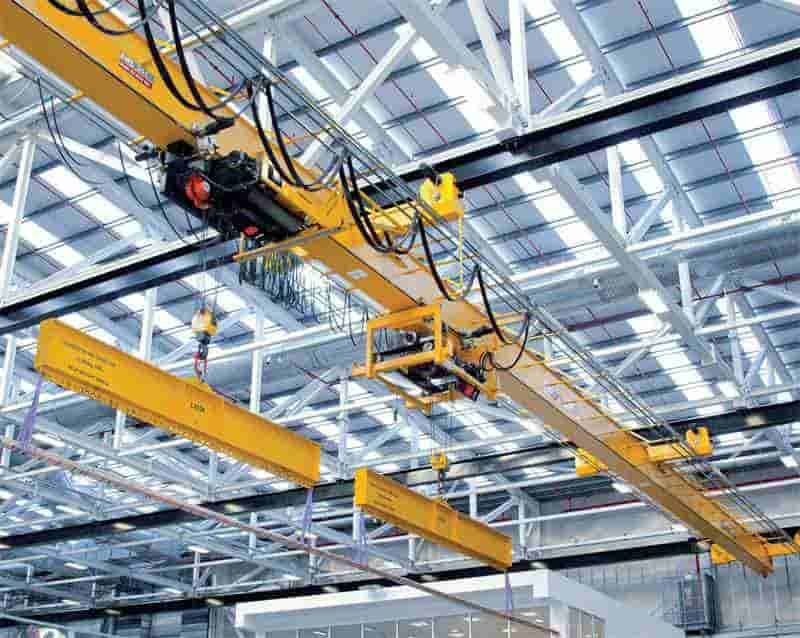Today, Dongqi Crane shared with customers a case of an aircraft wing manufacturing factory customizing two bridge cranes. Any case of a special working condition is worth learning from together with our clients. If customers can easily explain the complexity of the working conditions they face, it will save a lot of time for our engineers. However, if our engineers have a certain understanding of various complex working conditions, it will also be beneficial for customers facing similar working conditions.

The crane will produce composite wings and components for commercial aircraft and business jets to fulfill an order for 138 passenger aircraft.
They have four suspension points and a pin joint system for curved crane beams and removable roofs.
The spans between the crane tracks of the two bridge cranes are 20m and 25 m respectively. The tracks are integrated into the roof structure and feature cantilevered extensions, giving the system greater coverage.
Crane companies say that when installing the crane beam, they took care to reduce the overall depth of the crane and provide maximum working height. The crossbeam is suspended from under the traveling track, while the hoist is suspended from under the crane bridge.
The crane company offers electric hoists that provide a 6m lift height for all cranes.
The crane company said it equipped the main production area with a four-axle 20-ton single-girder crane, which has a completely different design than those commonly seen on the market.
The crane company explains that the 20-ton ‘jiggle’ crane is used with 15-ton and 10-ton cranes for precise positioning.
“On a jiggle crane, the first hoist carries most of the weight of the wing and the second hoist provides lateral adjustment, allowing the wing to rotate 600mm and an additional plus or minus 300mm about the beam axis,” it said.
“This multi-span crane has four suspension points with a total span of 64m and a jib at each end. The box girder design provides the required strength and stiffness, with pinned connections providing the crane girder with flexibility of movement, So that it can flex as the roof moves.”
In the assembly area, an 8-ton underslung twin-girder crane rotates the wing half a turn (200 degrees) on twin swivel hoists.
“The lifting and walking motion, with walking speeds ranging from 400 mm per minute to 20 m per minute, uses sensorless current vector control for precise positioning and smooth movement,” the company said. A radio remote control is included with the order to provide Safety and ease of use, and comes with a push button pendant as a backup control. “
Includes load capacity limiter, audible alarm and flashing amber warning light for added safety.
The aircraft manufacturer’s system ensures the wings can move along a 52m pinned crane bridge. The turntable is equivalent to a 5m long small crane running on a circular track between the main crane girders.
Understand application areas and job requirements:
Master the basic structure and working principles:
Identify key parameters and performance indicators:
Material selection and structural design:
Security and reliability considerations:
Comply with standards and regulations:
Use advanced simulation and analysis tools:
Consider ease of maintenance and repair:
Work with domain experts:
To sum up, the design of bridge crane requires the comprehensive use of multi-disciplinary knowledge such as mechanical engineering, materials science, control engineering, etc., and at the same time, customized design based on the characteristics and requirements of the application field. Through continuous learning and practice, and gradually mastering these skills, you will be able to design an efficient, safe, and reliable overhead crane that meets actual needs.
Contact our crane specialists
Send us a message and we will get back to you as soon as possible.